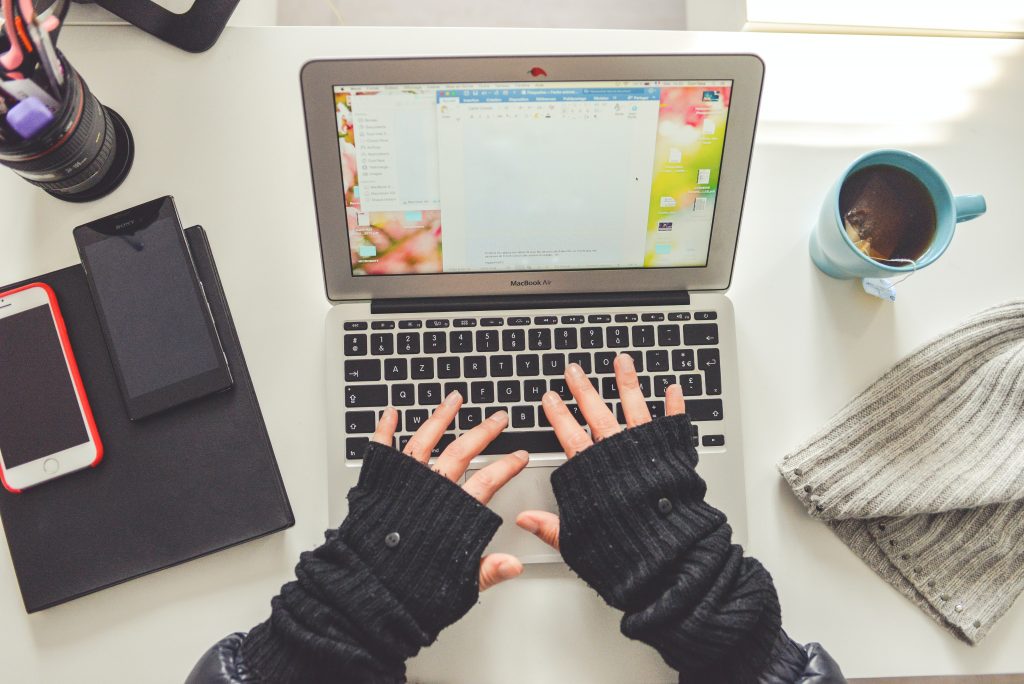One of the easiest ways to increase productivity and decrease distractions is to stop the email overload in your life (and multiple email inboxes!) Let’s talk about how to stop the email overload.
How to Stop the Email Overload | A Guide to get you Started

Email is part of our everyday lives. It’s become a normal way to communicate with loved ones, friends, colleagues, and companies near and far. BUT…it can become overwhelming in our daily lives. As we talked about last month, clutter affects our work productivity and our email inbox is part of our mental clutter.
The Basics
How is email overloading our mental load (also known as mental clutter)?
Remember, clutter is anything that takes away our energy and focus from what is most important to us. Mental Clutter affects our ability to process information. Email is part of our digital clutter and it affects our ability to process information intentionally.
Picture this: Have you ever opened your email inbox first thing in the morning? Were you overwhelmed with responding to the messages in your email? Did you proceed to check your email right before bedtime? Did you have trouble sleeping after reading a not-so-friendly email?
I know, I’ve been there.
Email is a passive activity that eats away at our time. It causes our brains to go into overdrive to address all the information coming in from it. Let’s shift this today with simple steps.
Get the Digital Product Blueprint
First Steps to stop the email overload
Clarify the purpose of your email inbox. Write it down… the purpose of my email inbox is…
If you’re having trouble with this, think about:
- What type of communication tool do you want your email to be?
- Is email for non-urgent communication or urgent communication?
Remember, YOU get to decide this purpose. Not someone else. Not societal pressures.
I used to think email was for urgent communications and allow it to control my life 24/7. I soon realized the high levels of stress, burnout and clutter in my life were related to email (and this false thinking). Typically, email is for non-urgent communications. We respond within a reasonable timeframe (usually 24-72 hours) but not immediately. Urgent communication is usually related to phone calls/text messages and not email.
Now you may be thinking that this statement is not possible. Trust me, it is. Just like everything in life, we teach others how to treat us, how to talk to us and how to communicate with us. We set the expectations and boundaries we want to have in life.
That includes EMAIL.
Picture this: Not sure how to communicate an email boundary? Write it into your contract before selling a service, a welcome letter when someone purchases from you, talk about how to get in touch with you to your colleagues, babysitters and friends. My contracts and welcome letters clearly state that we believe in work-life alignment and that means urgent communications are done via a business text message and non-urgent communications via email will be responded to within 24-48 business hours.
How to Simplify your Email Overload
Keep it simple to free up your space and mind to generate energy daily. Use these basic principles to get started:
1. Schedule time to open your email inbox
2. Each email requires 1 of 3 options:
- File into an Archive folder (NOT into a sub-folder) if you read it but don’t need to do anything with it and it should not be deleted.
- Act on it now if it takes 2 minutes or less. I call this closing the files. Anything in life that takes 2 minutes or less, we do right away to avoid the accumulation of mental clutter in our brains.
- Defer the email and schedule a time on your calendar to respond to it. Maybe that means it takes 15 minutes or 30 minutes to gather the response. Add it to your calendar so you won’t forget about it. Then, file this email into the Archive folder to free up the space in your email inbox.

How to align email into your life
Continue to set boundaries around email. Here are a couple questions to consider asking yourself:
- Does this email bring value to my life?
- Does reading this email spark joy?
If yes, keep these emails and read and enjoy them. If no, unsubscribe from these email lists (usually at the bottom of the email) and let it go with gratitude. The emails you signed up for to receive a promotion can always be re-subscribed if the need arises again. If you signed up to follow a resource you enjoyed using but have not been reading the recent emails, let it go. Know you can always re-subscribe when it fits your life and you’ll TAKE ACTION on the emails again.
If emails are considered “essential” for work purposes but don’t fit the above two questions, go back to the first steps above on how to teach others to communicate with you.
Simple Daily Steps to stop Email Overwhelm
Apply what you’ve learned here. You can stop email overwhelm! Subscribe to less emails, send less emails, and feel the joy of less email clutter! Remember, if you don’t want emails to be urgent communication tools, then don’t respond immediately to emails. And most importantly, stop checking email outside of work hours!
+ show Comments
- Hide Comments
add a comment